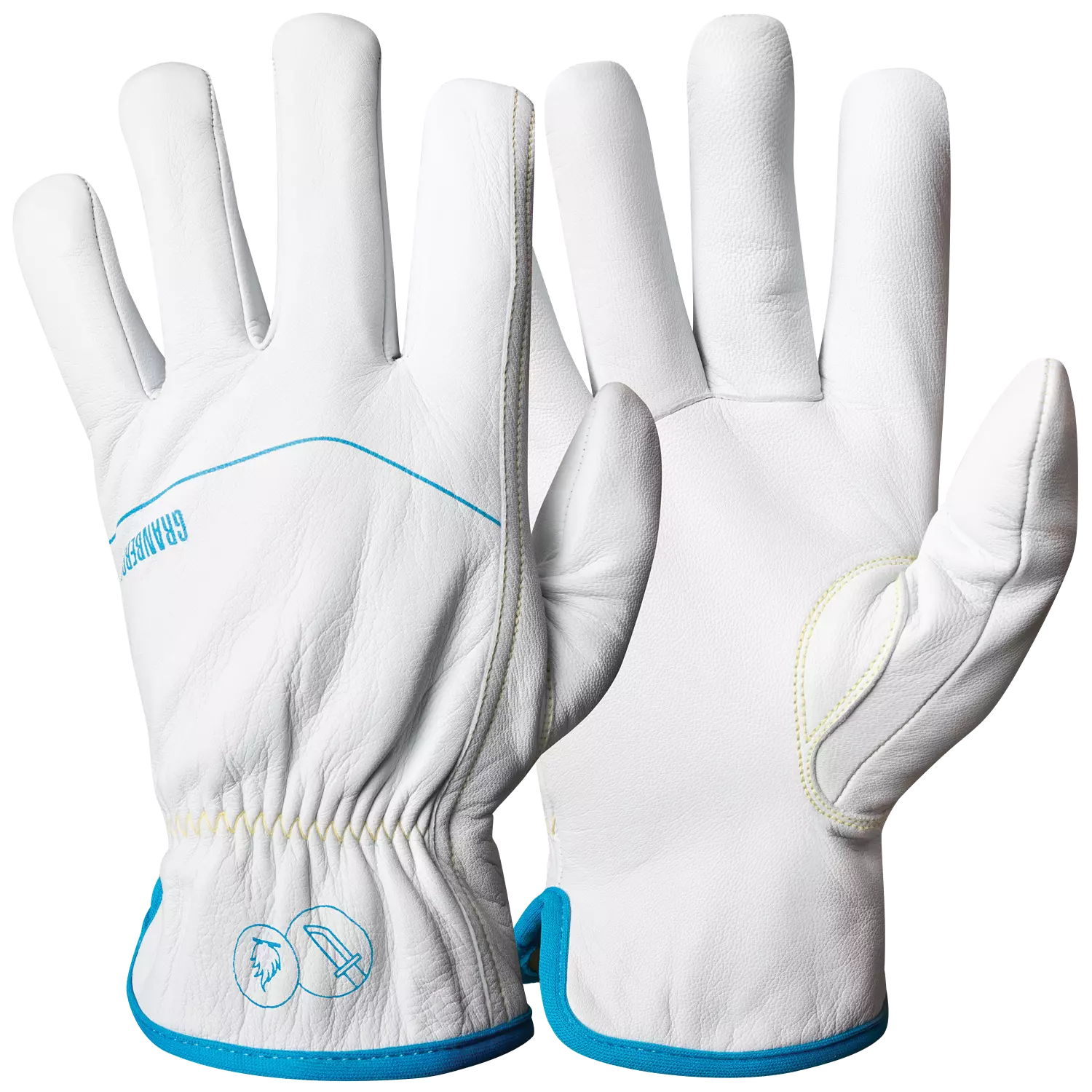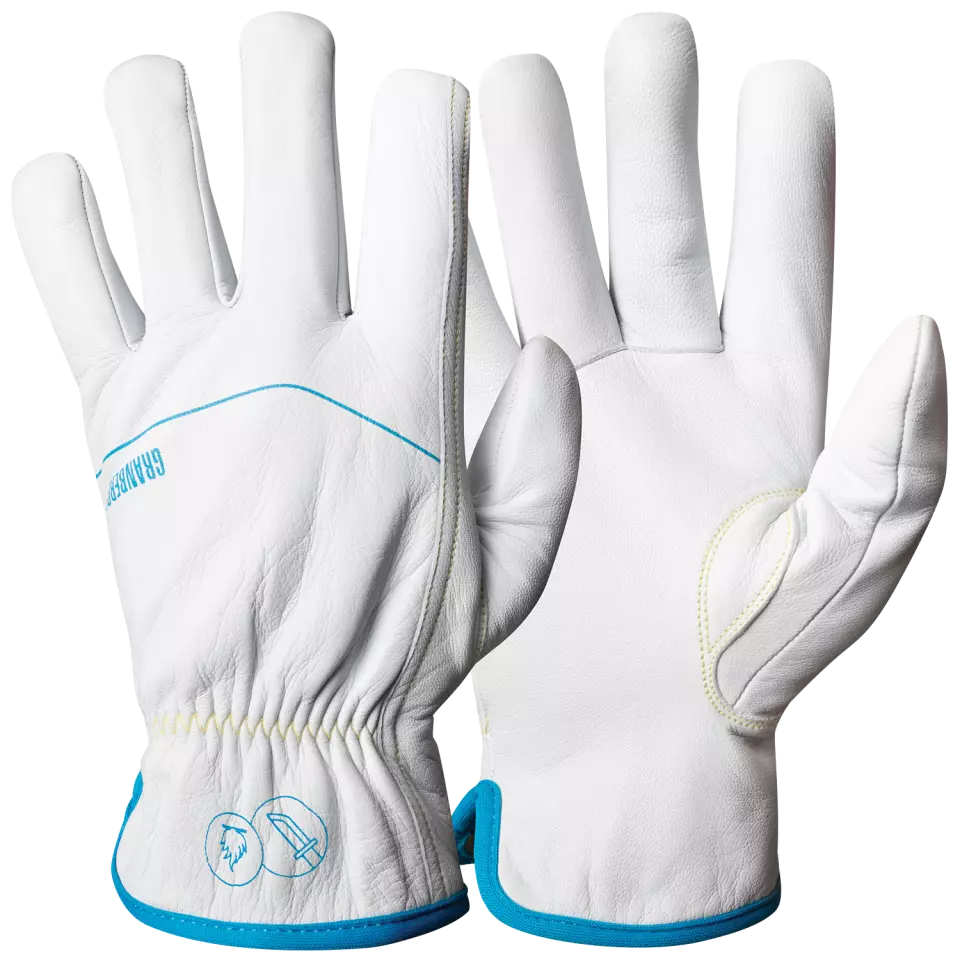These premium protective gloves combine soft yet durable goatskin leather with a complete Kevlar® lining to deliver superior protection and exceptional dexterity. Engineered for demanding industrial environments, they feature advanced arc flash protection (Level 3, ATPV 34 cal/cm²) and comprehensive resistance against cuts, tears, and heat. The goatskin construction offers a higher strength-to-weight ratio than traditional cow grain leather, while maintaining excellent touch sensitivity and comfort.
Product Features:
- Full Kevlar® lining stitched into goatskin leather
- Sewn with Kevlar® threads for enhanced durability
- Superior dexterity and touch sensitivity
- Precision grip in dry conditions
- Normal fit design for comfort
Technical Details:
- Thickness: 0.7-0.9 mm
- Arc flash protection: Level 3 (ATPV 34 cal/cm²)
- Cut resistance: Level C
- Abrasion resistance: Level 3
- Tear and puncture resistance: Level 2
- Heat protection:
—Limited flame spread: Level 4
—Contact heat: Level 1
—Convective heat: Level 1
—Radiant heat: Level 1
Recommended Applications:
- Construction
- Automotive manufacturing
- Oil and gas
- Assembly
Standards:
- CE Category III (Notified body 2777)
- EN ISO 21420:2020
- UKCA certified
These premium protective gloves combine soft yet durable goatskin leather with a complete Kevlar® lining to deliver superior protection and exceptional dexterity. Engineered for demanding industrial environments, they feature advanced arc flash protection (Level 3, ATPV 34 cal/cm²) and comprehensive resistance against cuts, tears, and heat. The goatskin construction offers a higher strength-to-weight ratio than traditional cow grain leather, while maintaining excellent touch sensitivity and comfort.
Product Features:
- Full Kevlar® lining stitched into goatskin leather
- Sewn with Kevlar® threads for enhanced durability
- Superior dexterity and touch sensitivity
- Precision grip in dry conditions
- Normal fit design for comfort
Technical Details:
- Thickness: 0.7-0.9 mm
- Arc flash protection: Level 3 (ATPV 34 cal/cm²)
- Cut resistance: Level C
- Abrasion resistance: Level 3
- Tear and puncture resistance: Level 2
- Heat protection:
—Limited flame spread: Level 4
—Contact heat: Level 1
—Convective heat: Level 1
—Radiant heat: Level 1
Recommended Applications:
- Construction
- Automotive manufacturing
- Oil and gas
- Assembly
Standards:
- CE Category III (Notified body 2777)
- EN ISO 21420:2020
- UKCA certified
These premium protective gloves combine soft yet durable goatskin leather with a complete Kevlar® lining to deliver superior protection and exceptional dexterity. Engineered for demanding industrial environments, they feature advanced arc flash protection (Level 3, ATPV 34 cal/cm²) and comprehensive resistance against cuts, tears, and heat. The goatskin construction offers a higher strength-to-weight ratio than traditional cow grain leather, while maintaining excellent touch sensitivity and comfort.
Product Features:
- Full Kevlar® lining stitched into goatskin leather
- Sewn with Kevlar® threads for enhanced durability
- Superior dexterity and touch sensitivity
- Precision grip in dry conditions
- Normal fit design for comfort
Technical Details:
- Thickness: 0.7-0.9 mm
- Arc flash protection: Level 3 (ATPV 34 cal/cm²)
- Cut resistance: Level C
- Abrasion resistance: Level 3
- Tear and puncture resistance: Level 2
- Heat protection:
—Limited flame spread: Level 4
—Contact heat: Level 1
—Convective heat: Level 1
—Radiant heat: Level 1
Recommended Applications:
- Construction
- Automotive manufacturing
- Oil and gas
- Assembly
Standards:
- CE Category III (Notified body 2777)
- EN ISO 21420:2020
- UKCA certified


